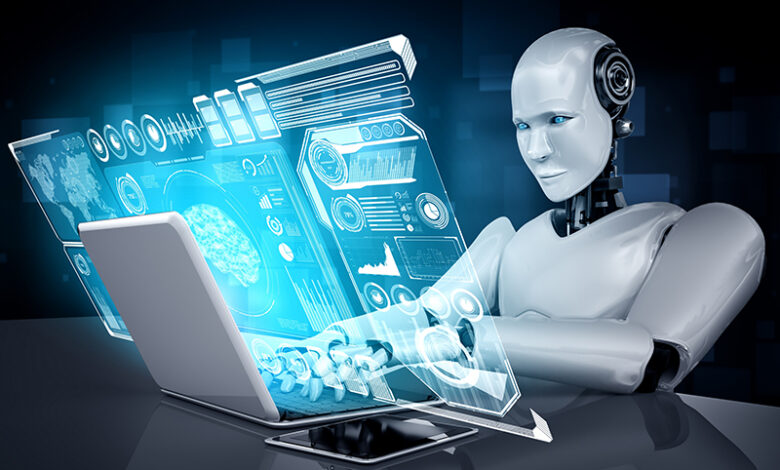Artificial Intelligence: Shaping the Future of Technology and Human Potential

Understanding Artificial Intelligence
Artificial Intelligence is no longer just a futuristic concept tucked away in science fiction novels or portrayed as humanoid robots in blockbuster movies. It has firmly planted itself in our daily lives, influencing everything from the way we communicate to how we work, shop, learn, and even think. At its core, Artificial Intelligence refers to the ability of machines and computer systems to perform tasks that would typically require human intelligence. This includes reasoning, learning, problem-solving, understanding natural language, and recognizing patterns in data.
Unlike traditional software, which follows a rigid set of programmed instructions, Artificial Intelligence systems can adapt and improve their performance over time. This is achieved through algorithms designed to process massive amounts of data, identify patterns, and make decisions with minimal human intervention. Think of it like a digital brain that constantly refines its understanding based on experience, much like we do as humans. The difference is that Artificial Intelligence can do this at speeds and scales that are virtually impossible for a person to match.
Today, Artificial Intelligence isn’t just confined to research labs or experimental prototypes. It has moved into the mainstream, subtly powering recommendation engines on streaming platforms, enhancing voice assistants, streamlining customer service, detecting fraud, and even assisting in medical diagnoses. This seamless integration has made both an invisible assistant and a game-changing innovation.
How Artificial Intelligence Works in Everyday Life
To grasp why Artificial Intelligence is such a powerful tool, it’s important to understand how it operates behind the scenes. At a high level, most Artificial Intelligence systems rely on machine learning models, which are trained on enormous datasets to recognize relationships, patterns, and trends. This is similar to how we learn from experience: by encountering many examples, drawing conclusions, and applying those conclusions to new situations.
Take image recognition as an example. If you want a system to identify a cat in a photograph, you feed it thousands of images labeled as cats and thousands more labeled as not cats. Over time, the brain develops an internal representation of what constitutes a cat — from fur texture and ear shape to tail length and facial proportions. Once trained, it can accurately identify new images without needing explicit instructions each time.
This process doesn’t stop with visual data. Artificial Intelligence can work with text, audio, video, and even complex sensor readings from machines or vehicles. Natural language processing allows it to interpret and respond to human speech. Predictive analytics lets it forecast outcomes such as product demand or potential equipment failures. Reinforcement learning enables it to refine strategies by trial and error, much like a child learning to ride a bike.
In a sense, Artificial Intelligence has become a silent collaborator in many of our daily tasks. It’s what helps your email app filter spam, ensures your GPS finds the fastest route, tailors your news feed, and even predicts the songs you might enjoy next. Each interaction is informed by algorithms designed to make decisions quickly and with high accuracy, all while learning from your behavior to improve the experience.
The Benefits of Artificial Intelligence Across Industries
One of the most compelling reasons Artificial Intelligence is gaining traction is the immense value it delivers across countless industries. In healthcare, it is revolutionizing diagnostics, treatment planning, and drug discovery. Algorithms can analyze medical images faster and sometimes more accurately than human specialists, detecting early signs of disease that might otherwise go unnoticed. This allows for earlier interventions, potentially saving lives.
In the financial sector, Artificial Intelligence is a powerful ally for detecting fraudulent transactions, managing risk, and automating customer service. It’s capable of scanning millions of transactions in real time, flagging anomalies that could indicate theft or manipulation. Meanwhile, investment firms use Artificial Intelligence to sift through market data and uncover opportunities that would be invisible to even the most experienced analysts.
Manufacturing and logistics also benefit enormously from Artificial Intelligence. Predictive maintenance powered by machine learning can anticipate equipment breakdowns before they occur, reducing downtime and saving costs. In warehouses, Artificial Intelligence optimizes storage layouts and automates order fulfillment with robotic systems that adapt to demand patterns.
Education is another field transforming. Adaptive learning platforms powered by its can tailor lessons to a student’s pace, style, and progress. Instead of a one-size-fits-all curriculum, learners receive personalized instruction that addresses their strengths and weaknesses. This holds the potential to close achievement gaps and make quality education more accessible.
Ethical Considerations in Artificial Intelligence
With great power comes great responsibility — and Artificial Intelligence is no exception. As these systems become more capable, questions about ethics, transparency, and fairness have come to the forefront. It learns from data, and if that data contains bias, the system can inadvertently perpetuate or even amplify those biases. This could lead to unfair decisions in hiring, lending, law enforcement, and other critical areas.
There’s also the concern of accountability. When an Artificial Intelligence system makes an error or a harmful decision, determining who is responsible can be complex. Is it the developer who created the algorithm, the organization that deployed it, or the data it was trained on? These questions are pushing policymakers, technologists, and ethicists to create guidelines and standards that ensure Artificial Intelligence is used responsibly.
Privacy is another significant challenge. Artificial Intelligence often requires vast amounts of personal and behavioral data to function effectively. This raises concerns about surveillance, consent, and how much control individuals should have over their information. Striking the right balance between technological advancement and personal privacy is one of the most pressing debates in the field today.
The Future of Artificial Intelligence
The journey of Artificial Intelligence is only just beginning. Future advancements could bring about even more transformative changes. Self-learning systems could become increasingly autonomous, tackling complex challenges from climate modeling to interplanetary exploration. We might see its-powered healthcare assistants capable of delivering real-time, personalized health guidance, or education systems that adapt instantaneously to global needs.
However, these developments will require careful navigation. The same capabilities that make it powerful also carry risks if misused. Ensuring that progress benefits everyone, rather than concentrating advantages in the hands of a few, will be critical. Global cooperation, transparent governance, and continued ethical oversight will play vital roles in guiding the evolution of Artificial Intelligence.
Artificial Intelligence has already reshaped our world in profound ways, and its influence will only grow stronger. By understanding its capabilities, limitations, and ethical implications, we can harness its potential to create solutions that enhance human life, rather than replace it. It’s not about humans versus machines, but about humans working alongside intelligent systems to solve problems and unlock new possibilities.
